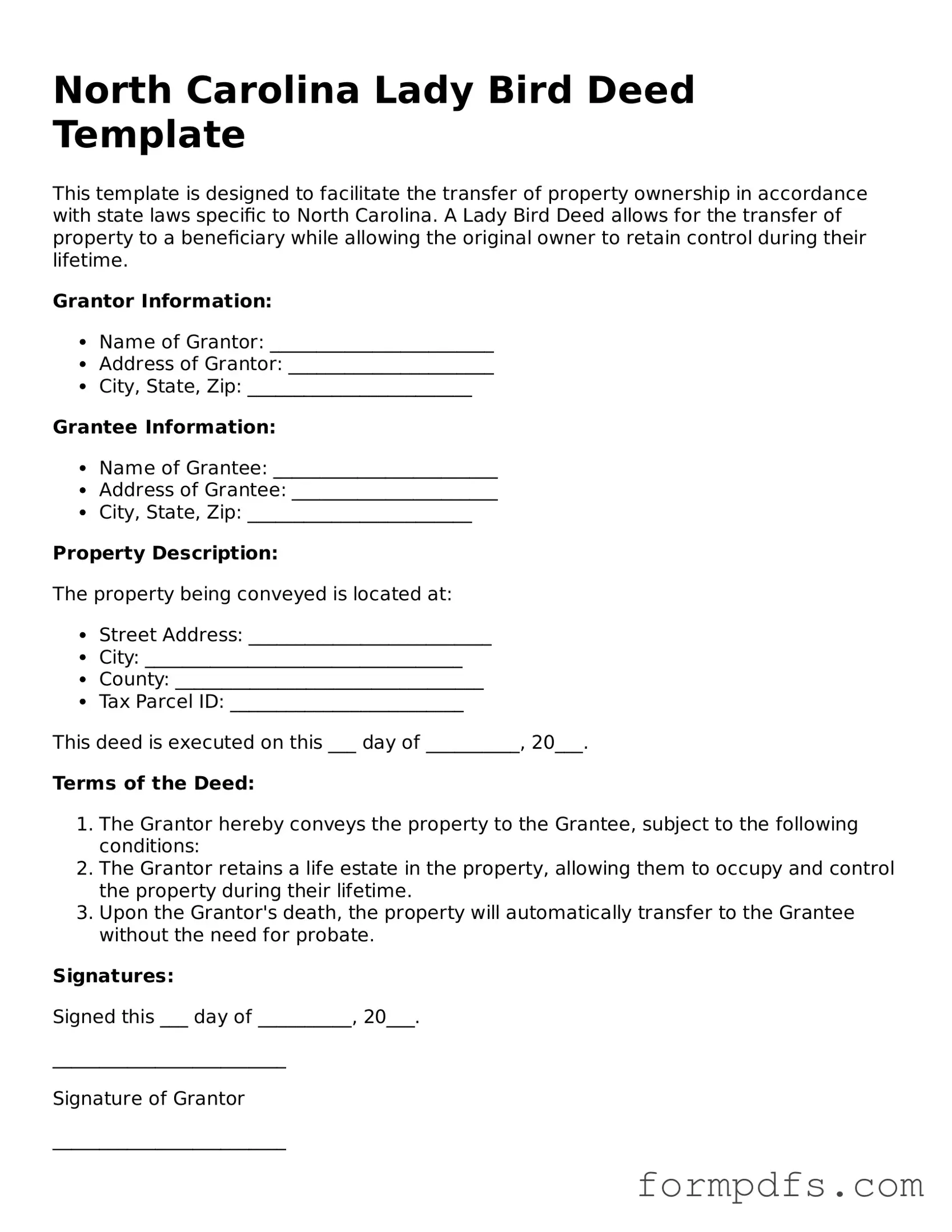What is a Lady Bird Deed in North Carolina?
A Lady Bird Deed, also known as an enhanced life estate deed, allows property owners to transfer their property to beneficiaries while retaining the right to live in and control the property during their lifetime. This type of deed helps avoid probate and can provide tax benefits, making it a popular choice for estate planning in North Carolina.
Who can use a Lady Bird Deed?
Any property owner in North Carolina can use a Lady Bird Deed. It is particularly beneficial for those who want to ensure their property passes directly to their heirs without going through the probate process. However, individuals should consider their specific circumstances and consult with an estate planning professional to determine if this deed is appropriate for their needs.
What are the benefits of using a Lady Bird Deed?
One of the main benefits is the avoidance of probate, which can save time and money for heirs. Additionally, the property owner retains full control of the property during their lifetime, allowing them to sell, mortgage, or change beneficiaries as needed. This flexibility can be a significant advantage in estate planning.
Are there any drawbacks to a Lady Bird Deed?
While there are many advantages, there are some potential drawbacks. For instance, if the property owner needs to qualify for Medicaid, the property may still be counted as an asset. Additionally, if the property owner wishes to change their mind about the beneficiaries, they can do so, but it may require additional legal steps. It’s essential to weigh these factors carefully.
How do I create a Lady Bird Deed?
To create a Lady Bird Deed, you will need to draft the deed, including specific language that reflects your intentions. It’s advisable to work with an attorney who specializes in estate planning to ensure that the deed complies with North Carolina laws and accurately represents your wishes. After drafting, the deed must be signed and notarized, then recorded with the county register of deeds.
Can I revoke a Lady Bird Deed?
Yes, a Lady Bird Deed can be revoked at any time during the property owner's lifetime. To revoke the deed, the property owner must execute a new deed that explicitly states the revocation and record it with the county register of deeds. This process ensures that the property is no longer subject to the terms of the original Lady Bird Deed.
Is a Lady Bird Deed the same as a regular life estate deed?
No, a Lady Bird Deed differs from a regular life estate deed in key ways. While both allow for a life estate, a Lady Bird Deed grants the property owner the right to sell or mortgage the property without the consent of the remaindermen. This flexibility is not typically available with a standard life estate deed, making the Lady Bird Deed a more advantageous option for many property owners.
